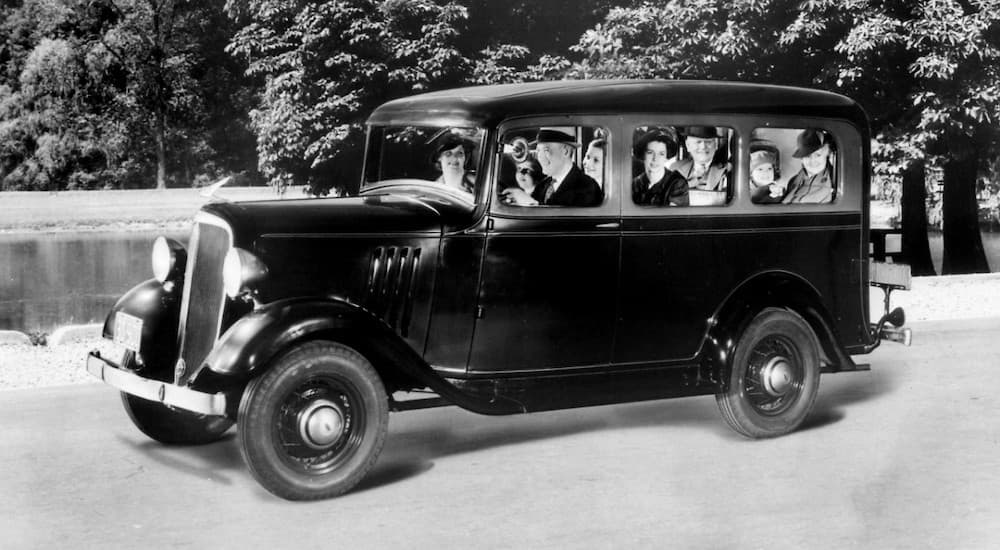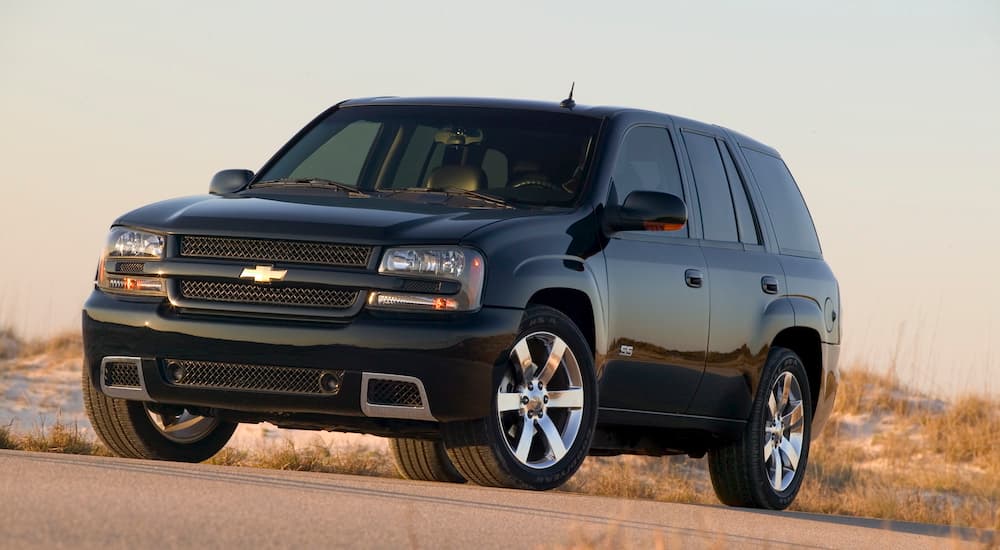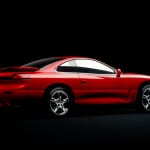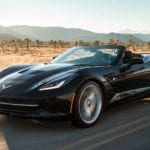The Original Founders of The Sport’s Utility Vehicle
If you stop by any Chevy dealership today, it’s clear that SUVs take up a large share of the market space. With news of the 2021 Chevy Trailblazer making its way back to the US, interest in SUV innovation continues to thrive. The now ubiquitous “SUV” underwent a long history of evolution before becoming American families’ ride of choice. Early models have been in circulation for almost 100 years. In the 1930’s and 40’s, off-road, four-wheel drive vehicles were developed by various auto companies throughout the world. With a truck-powered engine and covered cargo space or seating, these designs paved the way for what we now know as the “SUV.” The United States, Germany, Russia, and Japan all produced their own versions in the race to innovate the automobile industry.
During World War II, military-style SUVs were initially intended to support the troops. Beginning in the Spring of 1942, three auto giants joined together in mass production efforts for the war. Manufacturing plants were shut down, and commercial car production was put on hold to use these facilities to manufacture vehicles, guns, and airplane parts. The three American companies included Ford, Dodge, and Chevrolet.
The 1935 Chevrolet Carryall Suburban

Early history in SUV development helped shape the trajectory that drove Chevy to its current status in modern manufacturing. It’s tough to pinpoint definitively, but many car enthusiasts name the 1935 Chevrolet Carryall as America’s first SUV. The military was keenly interested in this type of enclosed automobile for transporting soldiers, but it also served a purpose for many commercial buyers as well. At the time, the Chevy Carryall was a powerful vehicle, perfect for farmers or workers who needed the extra space. As opposed to a typical truck, the Carryall provided covered storage for cargo or seating space for passengers, making it ideal for different weather conditions and terrain. Up to eight passengers could fit comfortably inside this model, with three in the front, two in the middle and three in the back row.
Another major innovation with this vehicle was the way it was made. The exterior design was improved to withstand the test of time. The Chevy Carryall’s body was made of all steel. This was a big change from Chevy’s 1933 Station Wagon that was constructed primarily of wood.
Modifications and upgrades continued into the 1940s, with primary production efforts still focused towards the military. Innovations included the introduction of four-wheel drive. This was useful for the military; however, a bit too expensive for average household consumers. Over time and with increased production, the price for four-wheel drive became more reasonable. Jeep was the first to start advertising four-wheel drive commercial vehicles, but eventually, this spread across other major manufacturers. After 1955, Chevy upgraded its Suburban to four-wheel drive, making it more accessible to everyday drivers. A little earlier, in 1953, automatic transmissions were also added to the Chevy Suburban. After this model, drivers had the option to choose from tailgate or panel doors, adding to the appeal for customers.
The Evolution of the Modern SUV
Large, multi-passenger vehicles with truck-powered engines were initially seen as rugged vehicles that were meant for heavy work or army men. The evolution to more comfort-based and luxury SUVs happened from the late 1960s through the ’80s. An early example includes the 1967 Toyota Land Cruiser. Shortly after it’s release, the Chevrolet K-5 Blazer arrived on the market in 1969.
Along with the 1971 International Harvester Scout II, the Chevy Blazer popularized a new, two-door style. Prior to this, SUVs typically had just one door on the driver’s side (everyone else had to climb in). Luxury brands entered the off-road market with the introduction of the 1970 Range Rover Classic. Early versions of crossover-type SUVs were seen by the early ’80s, an example being the 1979 AMC Eagle. With new options being added each year, upgrades in design and branding ushered mass appeal of SUV-type cars for suburban families. Across the board, SUVs were making their way into the mainstream and winning over public favor.
Despite their boost in development and sales, the actual term “SUV” wasn’t widely used until after the 1980s. Advertisements for the 1984 Jeep Cherokee introduced and popularized the term, “Sport Utility Vehicle.” Jeep helped standardize a name for the automobile that was taking the nation by storm. Now with a name, the race for sales was officially on.
Through the ’80s and ’90s, Chevy Corvettes and Trucks saw a boost, solidifying the company’s overall reputation and production. The success of the Chevy Suburban spurred continued focus on the market for SUVs. Over the past 30 years, Chevy has introduced several new lines of SUVs and Crossovers. First came the Chevy Tahoe, followed by the Equinox, Transverse, Trax, Captiva Sport, and Blazer.
The Chevy Blazer has a well-known reputation. “Car and Driver” compared the new Blazer with the Ford Edge, rating the Blazer as better for it’s “responsive and stable handling, aggressive styling, and stout V-6 engine.” American Chevy fans looking for a larger version of the Blazer will be disappointed to learn that the Blazer XL is set to be released in China and possibly Brazil and South Korea. North America won’t be getting this vehicle, despite some spy shots that were leaked from Chevy’s heavily guarded US manufacturing facility. There is some good news from Chevy for American drivers though. After a brief hiatus, the Trailblazer will be coming back to North America very soon.
The Trailblazer Returns to the US Market for 2021
A spin-off of the Chevy Blazer is the Trailblazer. You might be wondering if this vehicle disappeared over the past ten years. Its production never stopped, it’s just been overseas. The Trailblazer was in the US market from 2000-2008. After 2008, it was only sold in other countries. It will be reappearing as a 2021 model, coming out in 2020. Long-awaited, the 2021 Chevy Trailblazer is a subcompact crossover, between the Trax and Equinox.
Full details on this new vehicle have not been released yet, but Chevy states it will be sure to include many modern features. Drivers can expect front pedestrian braking, automatic emergency braking, and lane-assist technology. Optional features will include a high-definition rearview camera, rear parking assist, and adaptive cruise control. Given the tight market competition for SUVs, it’s no surprise that Chevy is holding back some of the details closer to its official release in showrooms.
Crushing the Competition
One thing is for sure, SUVs are America’s favorite vehicle to drive. Starting from humble origins, SUVs have enjoyed steady popularity throughout history. There’s something about being able to fit all your stuff and your passengers into one powerful vehicle with a mighty engine that consistently appeals to American drivers.
SUVs overall secured market dominance in the 2000s, representing 35% of cars on the road in 2003. Despite dips in the economy and increased environmental awareness, the SUV has continued to adapt with the times and remain steady in the hearts of American families. With so many different SUVs to choose from, there is a wide appeal across markets. Everyone, from rugged off-road drivers to the stereotypical soccer mom, can find an SUV that suits their needs. It seems that the extra cargo space has become an indispensable feature for our on-the-go lifestyles.





